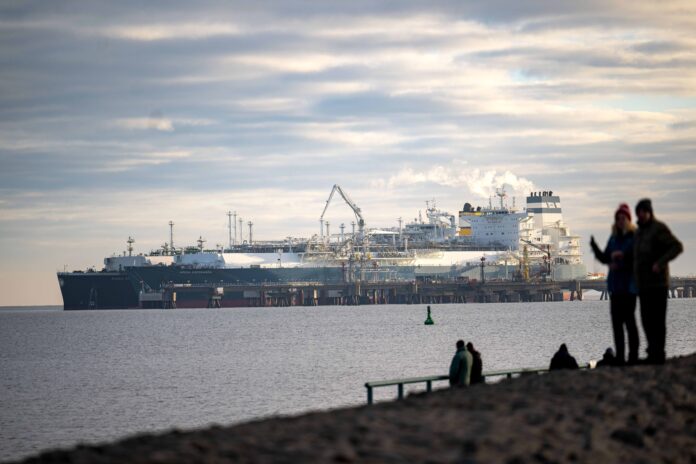Agency Report –
The floating terminals are located in the northern German cities of Wilhelmshaven and Brunsbüttel.
Meanwhile, private operator Deutsche ReGas, responsible for two floating terminals on the Baltic Sea, has not disclosed its capacity utilization figures.
However, data from Brussels-based gas infrastructure operator GIE indicates lower capacity use at the Baltic Sea terminals compared to those on the North Sea.
GIE statistics show that the terminals in Wilhelmshaven and Brunsbüttel collectively fed some 59.1 terawatt hours of gas into the grid in 2024.
According to the data, the two other floating terminals on the Baltic Sea contributed about 8.5 terawatt hours last year.
The Federal Network Agency, Germany’s main infrastructure authority, reported a slight decrease in natural gas imports via the LNG terminals, totalling 68 terawatt hours last year, down from 69.7 terawatt hours in the previous year, a decline of about 2.4%
According to the agency, LNG’s share of total gas imports remains low, accounting for some 8% last year, a modest increase of about one percentage point from the year before.
Following Russia’s invasion of Ukraine in 2022, the German government pushed for the construction of LNG terminals to reduce dependence on Russian gas supplies, which were severely limited and eventually ceased.
The terminals have sparked controversy due to their cost and environmental impact.




